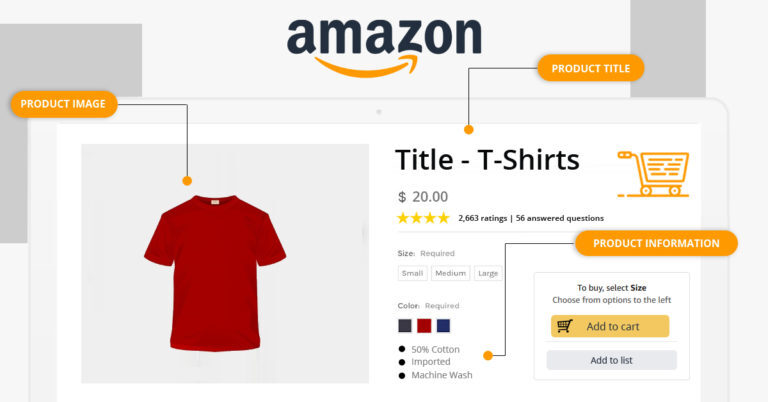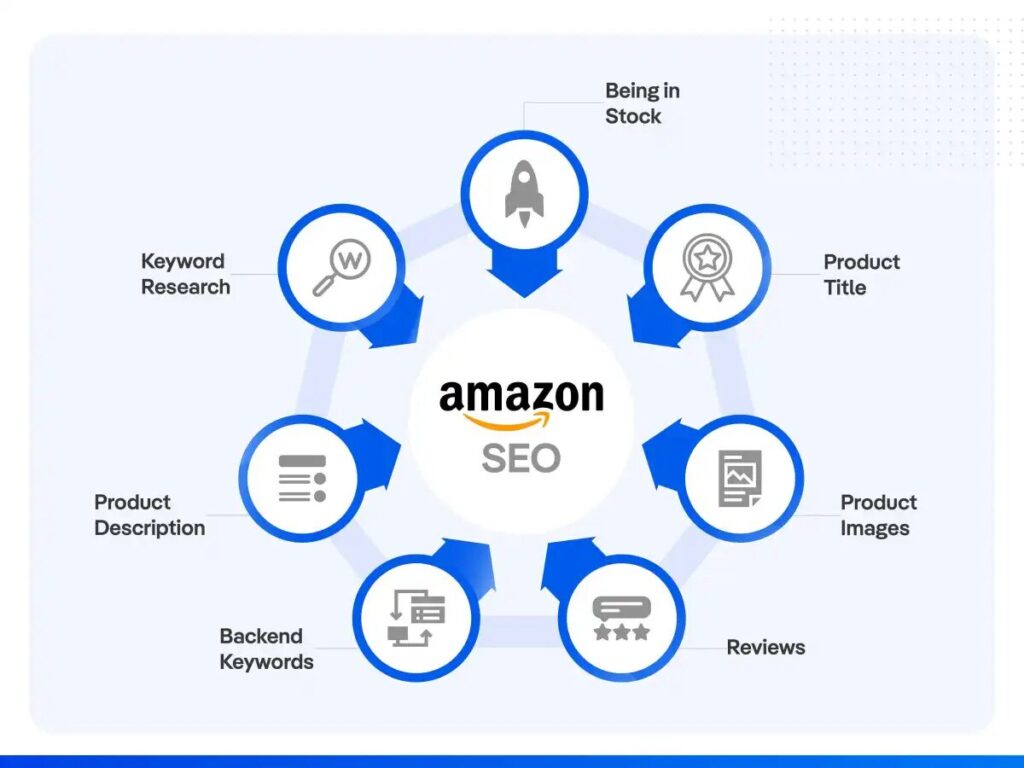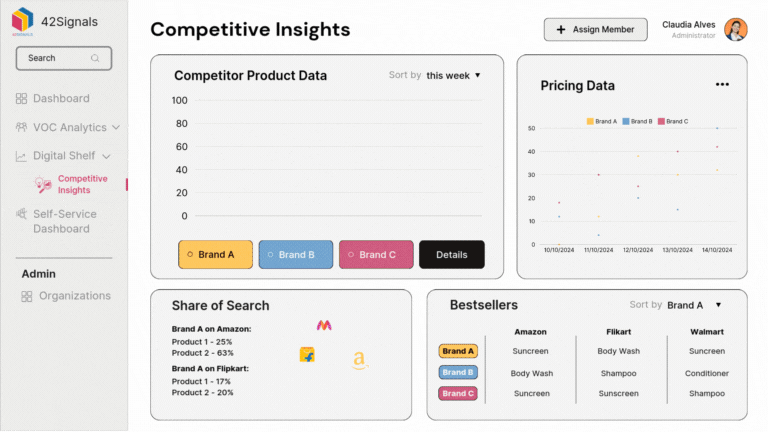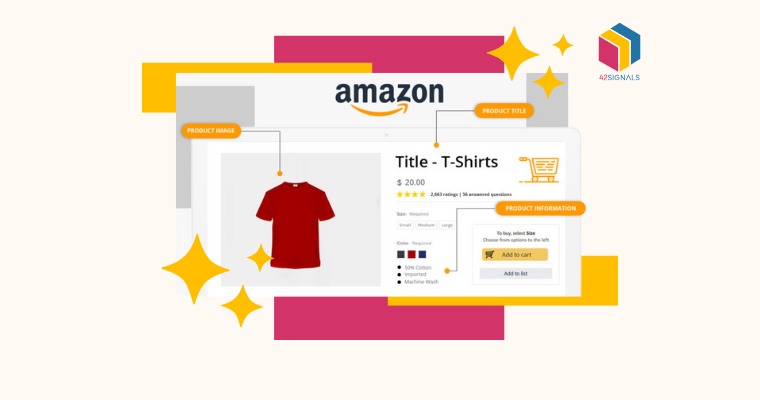On Amazon, where millions of products vie for attention, standing out from the crowd is essential. As an Amazon seller or e-commerce manager, you’re constantly looking for ways to improve your product listings, increase visibility, and boost sales. One effective way to achieve this is by leveraging digital shelf analytics, competitor insights, and monitoring your share of search. These strategies help you fine-tune your Amazon product listings to meet customer needs while staying ahead of the competition.
In this article, we’ll explore how these powerful tools and techniques can transform your Amazon business and help you improve your Amazon product listings for greater success.
What Does The Amazon Product Listing Landscape Look Like?

Image Source: Data4Amazon
Before diving into strategies for improvement, it’s essential to understand the importance of your Amazon product listing. Each product listing acts as the digital equivalent of a physical store display. It contains key elements such as the product title, description, images, bullet points, price, and customer reviews, all of which determine how well your product ranks and how likely it is to attract buyers.
However, the success of your product listing depends not only on its content but also on how it performs in the context of the broader Amazon marketplace. This is where digital shelf analytics and competitor monitoring come into play.
What Is Digital Shelf Analytics?

Digital shelf analytics refers to the process of monitoring and analyzing the performance of products across online retail platforms, including Amazon. It provides a detailed view of how your product listings are performing in terms of visibility, rankings, pricing, availability, and customer engagement.
By using digital shelf analytics, Amazon sellers can:
- Track product rankings and share of search.
- Analyze customer behavior and sentiment.
- Monitor competitors’ products and pricing.
- Ensure product listings are optimized for search algorithms.
Armed with this information, you can make data-driven decisions to optimize your Amazon product listings, ensuring that they not only rank high in search results but also convert visitors into buyers.
How to Improve Amazon Product Listing for Better Visibility?
1. Optimize for Amazon SEO

Image Source: Velocity
The key to increasing your visibility on Amazon is optimizing your product listings for Amazon’s search engine algorithm, commonly known as A9. To improve your product’s discoverability, focus on the following:
- Product Title: Your product title should be clear, concise, and include relevant keywords, including brand name, product type, and key features.
- Bullet Points: These should highlight the product’s key benefits, using concise and persuasive language. Ensure you use keywords naturally.
- Description: A detailed and keyword-rich description is vital for both the customer and Amazon’s algorithm. Focus on benefits, features, and solutions your product provides.
- Backend Keywords: Amazon allows you to input keywords that aren’t visible to customers but help your product rank better. Use this space wisely to include relevant terms you couldn’t fit into your visible listing.
- Images: High-quality images are essential to attracting customers. Include multiple images showing the product from various angles and use infographics where relevant.
By leveraging digital shelf analytics, you can continuously monitor and optimize these elements, ensuring they meet Amazon’s evolving search criteria and customer preferences.
2. Harness Competitor Insights

Monitoring your competitors is crucial for staying ahead in a competitive marketplace like Amazon. With competitor insights, you can:
- Track Pricing: Amazon customers are often price-sensitive, so it’s essential to monitor competitors’ prices and adjust your pricing strategy accordingly.
- Analyze Competitor Listings: By reviewing the titles, descriptions, and keywords that competitors are using, you can refine your own listing to outperform them.
- Compare Customer Reviews: Customer reviews provide a treasure trove of information. By reading reviews on competing products, you can identify common pain points and ensure your product solves those problems. Highlight these solutions in your product description and bullet points.
Competitor insights also provide you with valuable data on the features and benefits that your competitors are emphasizing. This allows you to differentiate your product in a crowded marketplace and stand out from similar offerings.
3. Monitor and Increase Your Share of Search
The share of search is a metric that shows how often your product appears in search results relative to competitors. In essence, it’s a measure of your product’s visibility on Amazon.
By tracking and increasing your share of search, you can:
- Identify Trends: If your share of search is dropping, it may indicate that your product is losing visibility. By identifying the reasons, such as increased competition or changing search trends, you can take corrective action.
- Boost Visibility: By optimizing your product listing and running strategic ad campaigns, you can improve your product’s share of search. Sponsored ads on Amazon can play a vital role here, giving your product a boost in search results for specific keywords.
- Analyze Keyword Performance: Use ecommerce analytics to track which keywords are driving the most traffic to your listing. If you notice certain high-value keywords that competitors are ranking for but you’re not, adjust your listing to target those keywords.
Increasing your share of search directly impacts your product’s visibility and, in turn, sales. This makes it a key performance indicator to monitor regularly.
4. Use Product Data to Optimize Inventory and Pricing
Inventory management and pricing strategies play a pivotal role in the success of your Amazon product listings. Digital shelf analytics provides real-time data on inventory levels, pricing trends, and stockouts, enabling you to make informed decisions.
- Avoid Stockouts: Running out of stock can cause your product to lose visibility and rank on Amazon, as the algorithm prioritizes available products. By tracking your inventory levels and comparing them with competitors, you can avoid stockouts and maintain your listing’s ranking.
- Dynamic Pricing: With ecommerce analytics, you can monitor competitors’ prices and adjust yours dynamically to stay competitive. Amazon shoppers are price-conscious, and adjusting your pricing to reflect market demand can help you win the Buy Box, which significantly boosts sales.
5. Leverage Amazon Prime and Enhanced Brand Content
If you’re selling through Amazon Prime, you already have a competitive edge. Amazon Prime customers are more likely to choose products that offer fast, free shipping, and they trust the Prime badge. To further enhance your product listing, consider enrolling in Enhanced Brand Content (EBC) or A+ Content, which allows you to add more detailed descriptions, images, and brand stories to your listing.
Enhanced Brand Content provides the following advantages:
- Boosts Conversion Rates: By offering richer content, EBC helps convert visitors into buyers. It’s an excellent way to tell your brand’s story and communicate your product’s unique value proposition.
- Improves SEO: High-quality content, combined with strategic keywords, can improve your product’s ranking and visibility on Amazon.
6. Analyze Customer Feedback and Make Continuous Improvements
Finally, one of the most effective ways to improve your Amazon product listing is by listening to your customers. Customer feedback in the form of reviews and ratings offers a direct window into customer satisfaction and potential areas for improvement.
- Monitor Reviews: Regularly check your product’s reviews for common complaints or suggestions. By addressing these issues, either through product improvements or better communication in your listing, you can enhance customer satisfaction.
- Respond to Negative Feedback: If a customer leaves a negative review, respond promptly and professionally. By showing that you care about customer feedback, you can build trust and improve your reputation on Amazon.
Digital shelf analytics can help you track customer sentiment across your product categories and identify patterns that need addressing, further improving your product listing.
Conclusion
Improving your Amazon product listings is an ongoing process that requires constant monitoring and optimization. By leveraging digital shelf analytics, gathering competitor insights, and tracking your share of search, you can stay ahead of the competition and ensure your products are visible to the right customers.
Incorporating product data, pricing strategies, and customer feedback into your optimization efforts will lead to increased sales and enhanced visibility on Amazon. Whether you’re a seasoned Amazon seller or just getting started, these strategies are essential for staying competitive in today’s fast-paced ecommerce landscape.
Maximize the performance of your Amazon product listings and achieve long-term success with the powerful insights and tools offered by 42Signals. Schedule a demo today!







